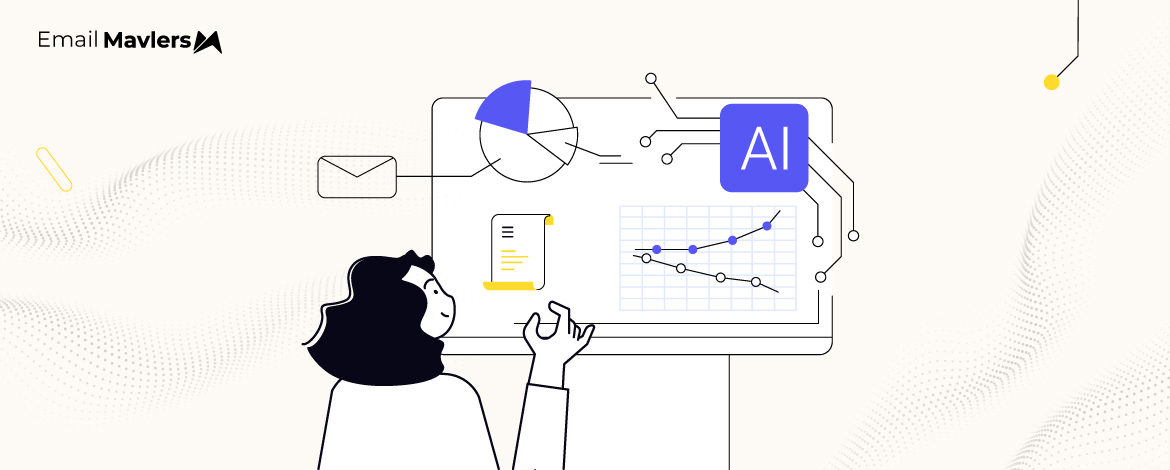Over the last 10 years, our organization has witnessed the evolution of email designing this close. In fact, for many of us, it’s been like watching one of those boy-to-man GIFs, with each new update adding another frame to the animation.😊
Currently, the landscape of email designing is experiencing a seismic shift with the advent of AI email summaries in major email clients such as Apple Mail, Gmail, and Yahoo Mail. These are designed to enhance user experience by providing concise overviews of email content, enabling users to glean essential information without even opening the email.
While this advancement is undeniably user-centric, it poses a unique set of challenges for email marketers.
Maybe you’re already seeing the repercussions of AI summaries.
Let’s not panic! In this post, we explore how AI email summaries are reshaping email design strategies, the potential impact on engagement metrics, and how marketers can adapt to this evolving landscape. Here we go!
Key Ways AI Summaries Reshape Email Design
There are five ways AI summaries are reshaping email marketing.
1. Subject Line & Preview Text
AI summaries often override traditional preview text, making subject lines the most critical component of the “email envelope” (sender name, subject line, and preview text).
Marketers must craft subject lines that:
- Are clear and compelling enough to stand alone.
- Work cohesively with preview text, avoiding tactics like “bait-and-switch” or “surprise reveals.”
Prioritizing transparency and relevance is vital to capturing attention effectively.
2. Concise, Front-loaded Content
To cater to AI summarization and human skimming, emails need to:
- Place key information early in the email, ensuring visibility.
- Use clear language, avoiding jargon.
- Highlight crucial details through bullet points or bold text.
Calls-to-action (CTAs) should be prominent and strategically positioned.
3. Optimizing for Image Blindness
AI may struggle to interpret visual elements like charts, logos, or infographics. To address this:
- Alt-text for images should be descriptive to aid AI in capturing essential visual information.
- Ensure that critical insights from visuals are mirrored in text form to maintain clarity and accuracy.
4. Personalization & Segmentation
AI summaries may prioritize emails that align with user preferences. Marketers must:
- Leverage data-driven segmentation to tailor emails to user interests.
- Personalize email content to resonate on an individual level, improving relevance and engagement.
5. Adapting to Engagement Metrics
AI summaries may lead to:
- Lower open rates as users rely on summaries instead of opening emails.
- Reduced click-through rates if summaries provide enough information, negating the need to explore further.
Marketers need to explore alternative engagement metrics, focusing on direct conversions and behavioral insights beyond opens and clicks.
Impact on Open & Click Rates
The average open rate across all industries stands at 35.63%.
But AI-generated summaries may reduce the incentive to open emails, especially when users can discern the content at a glance. This challenges marketers to rethink how they drive opens.
If AI highlights CTAs effectively, click-through rates may improve for well-optimized emails. Conversely, poorly summarized emails may see diminished clicks.
A precise and engaging summary could rekindle interest in overlooked emails, potentially driving new engagement.
Accuracy & Brand Voice Concerns
1. Inaccurate Summaries
AI can misinterpret complex language or visuals, leading to:
- Summaries that omit key details.
- Fabricated or misleading information, particularly in data-heavy emails.
2. Diluted Brand Messaging
Summaries may unintentionally alter tone and priority, weakening the brand’s intended voice and message.
3. Loss of Key Elements
AI may overlook CTAs or promotional details, diminishing the campaign’s effectiveness.
Differences Between AI Email Features in Apple, Yahoo, and Gmail
Let us briefly note the differences in how AI functions across these email clients.
1. Preview Text Replacement
Apple Mail replaces preview text with AI-generated summaries, offering users a quick, concise overview of the email’s content.
Yahoo Mail retains traditional preview text while supplementing it with bullet-point summaries, creating a layered preview experience.
Gmail integrates AI-driven summaries selectively, depending on the user’s settings and email type. Gmail’s emphasis is on relevance, often curating key details like sender, promotions, and updates to enhance prioritization.
2. Automatic vs. On-Demand Summaries
Apple Mail provides both automatic and on-demand summaries, allowing users more flexibility.
Yahoo Mail offers automatic summaries by default, providing a consistent experience for all users.
Gmail uses a dynamic approach, leveraging AI for summaries primarily in its “Smart Replies” and “Priority Inbox” features. Summaries may be dynamic for emails in categories like Promotions or Updates but are less common in standard inboxes.
3. Integration with Broader Ecosystems
Apple Mail seamlessly integrates its summaries into a larger AI suite, enhancing usability across the Apple ecosystem (e.g., Calendar and Notes sync).
Yahoo Mail focuses on standalone email enhancements, keeping its AI tools largely within the email client.
Gmail takes a multi-layered approach, embedding AI summaries within its existing AI features, such as Smart Compose and Personalized Tabs, while leveraging integrations with Google Workspace tools like Calendar and Drive.
Adapting Email Design for AI Summaries
To succeed in this new landscape, marketers must:
1. Craft Strong Subject Lines
Ensure subject lines alone convey the core message and entice the reader.
2. Enhance Content for Dual Audiences
Balance content for both AI and human readers with clear, skimmable, and concise information.
3. Use Visual Hierarchies
Implement headings, subheadings, and formatting like bold text to direct attention effectively.
4. Monitor Performance and Iterate
Continuously test and refine email strategies based on how AI clients interpret and summarize emails.
Closing Thoughts…
AI-driven email summaries are transforming email designing by shifting the focus toward clarity, relevance, and front-loaded value. While these innovations present challenges, they also offer opportunities to rethink strategies and foster deeper subscriber connections. By embracing adaptive techniques and leveraging insights, marketers can ensure their campaigns remain impactful in an AI-dominated inbox.
The email designing revolution is here. The question is: are you ready to embrace it?




